How to Do Crunches (And All Their Variations) the Right Way for Stronger Abs
Some people love them while others absolutely hate them. Crunches may be one of the most contentious ab exercises out there. The caution about crunches is understandable — if you only focus on this move, you’re paying attention to your “six pack muscles” and risk neglecting to train your core from all angles.
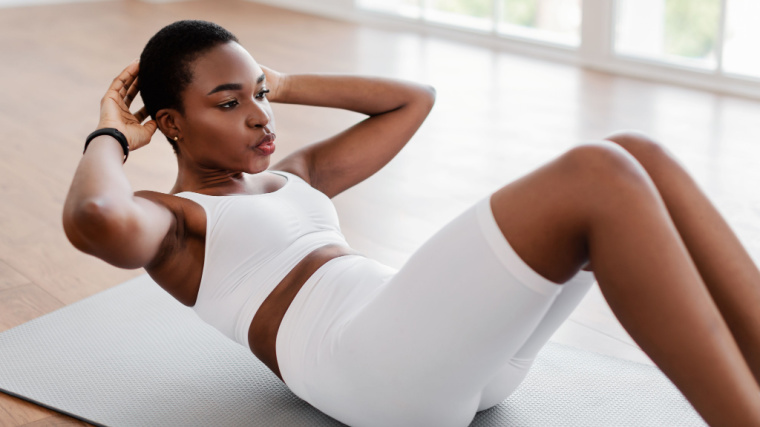
It’s true that crunches alone don’t make a complete core workout regimen. But if you combine them with other core strengthening moves — exercises that incorporate rotation, anti-rotation, and extension, for example — the oft-maligned crunch can be a valuable ally in your search for a strong set of abs. Here’s how to do the crunch properly, and why you should.
Mục Lục
How to Do the Crunch
The haters are right about one thing — if you do the crunch wrong, it can yield quite counterproductive results. So if you’re going to do it, do it right.
Step 1 — Set Up
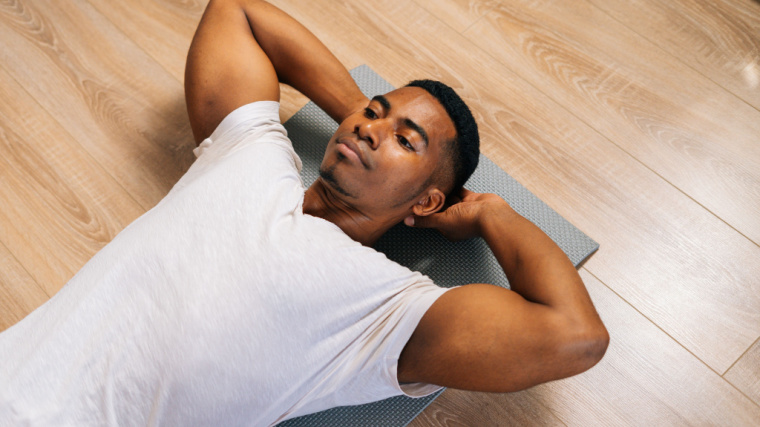
Lie on your back. Bend your knees and plant your feet hip-width apart. Place your fingertips just above your ears with your elbows splayed wide, pulling them back toward the ground. Alternatively, cross your arms over your chest.
Coach’s Tip: Press your fingertips gently onto the sides of your head rather than gripping behind your neck or ears. This will reduce the temptation to pull your neck forward with your arms.
Step 2 — Exhale and Crunch
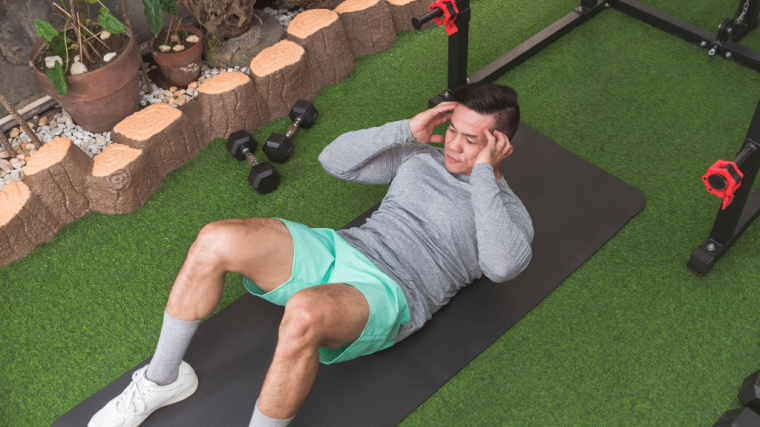
Relax your shoulders. Tuck your chin very slightly toward your chest. On an inhale, draw your abs down and back without moving. Exhale and use your abs to guide your head, neck, and shoulder blades just off the ground.
Coach’s Tip: Make sure your movement is coming from your core rather than pulling upward from your arms or neck.
Step 3 — Inhale and Release
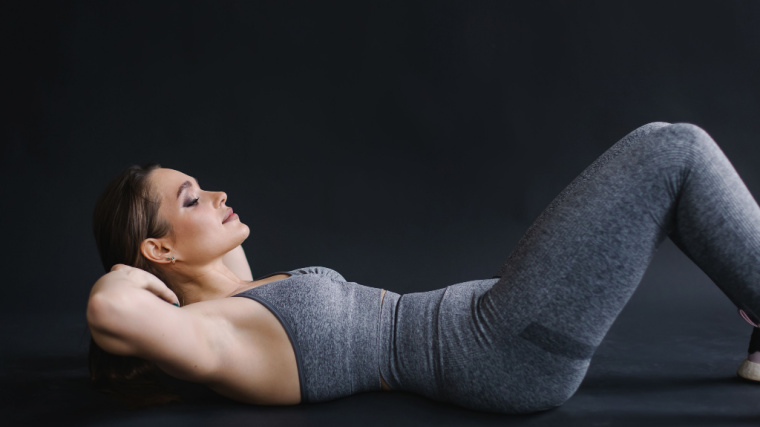
Once your shoulder blades have left the ground, give your abs a final squeeze. Inhale and slowly lower back to the ground.
Coach’s Tip: To help increase your core engagement, ground your heels hard into the ground throughout each rep.
Crunch Sets and Reps
Depending on your goals, you’ll want to adjust your set and rep scheme accordingly. Especially if you’re a beginner or are new to core-specific training, don’t underestimate the value of crunches as a core muscle-builder.
- For Core Activation: To increase your mind-muscle connection with your abs, perform two to three sets of 12 to 15 very slow, deliberate reps.
- For Muscle: Do three to five sets of 15 to 20 reps. If needed, progress the crunch by holding a weight plate at your chest — as long as your form remains perfect.
- For Endurance: Once you’re able to perform at least 20 reps per set with perfect form, aim for four to five sets of 25 to 35 clean reps each.
By increasing the ability to intentionally activate your abs — and building strength and endurance — you’ll be helping improve your ability to withstand stress under a loaded barbell.
Common Crunch Mistakes
Much of the intense criticisms of crunches comes from lifters’ tendency to perform them incorrectly. But if you perform them without rookie mistakes, they can be an effective addition to a well-rounded core routine.
Straining Your Neck
When you set up to perform crunches, slightly tuck your chin toward your chest. Maintain that position consistently, being careful not to bring your chin further down to your chest throughout the move.
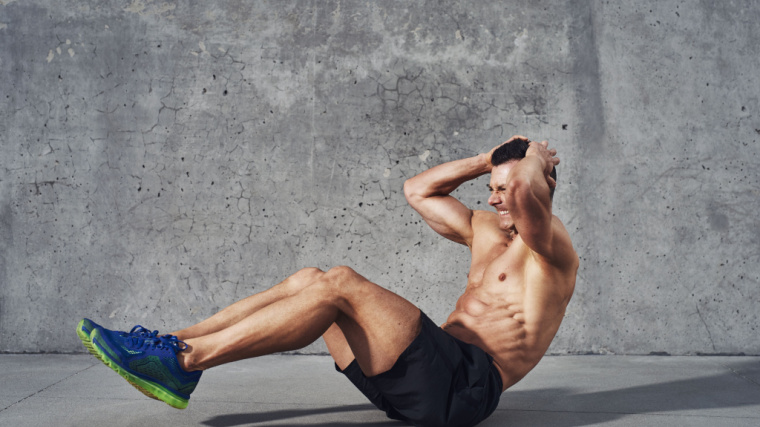
If you tend to yank your torso up and lead with your arms when your hands are by your ears, cross them over your chest instead. Imagine your abs leading your chest and shoulders, which in turn lead your chin and neck, instead of the other way around.
Crunching With Your Shoulders
The cousin of straining your neck is crunching your shoulders instead of your abs. Your shoulders should stay relaxed throughout your reps. Instead of letting your shoulders curl forward, keep them in the same position the whole time.
Only your abs should be curling forward. Your shoulders, neck, and head are just along for the ride.
Sitting Up Too Far
Crunches and sit-ups may have similar set-ups, but they’re not the same beast. When you’re aiming to do crunches, you’re intentionally keeping your range of motion small. Don’t give into the temptation to turn crunches into a whole different exercise.
Crunches allow you to give your abs that extra squeeze at the top of their tension — the moment your shoulder blades leave the ground — and then reset for the next rep. Press your lower back into the ground to help keep you connected to your core throughout the move.
Crunch Variations
As helpful as crunches can be for creating stronger abs, they can admittedly get a little bit redundant. Try out these variations to kick some spice into your ab training.
Butterfly Crunch
This crunch variation will challenge you to keep your heels pressed together — instead of on the ground — throughout your movement. You’ll get a stretch through your inner thighs, so you can train for hip mobility and core strength all at once.
https://youtube.com/watch?v=NW6axYgktFkVideo can’t be loaded because JavaScript is disabled: Butterfly Crunch (https://youtube.com/watch?v=NW6axYgktFk)
The butterfly crunch can also help you visualize your core differently. You won’t be able to accidentally use your hip flexors to assist your abs here. So grind your glutes and the sides of your feet down into the ground, and crunch it up.
Reverse Crunches
Sometimes, exercises are exactly what they sound like. That’s the case with reverse crunches. You’ll keep your shoulder blades on the ground and perform the dynamic crunch with your legs instead.
Move with slow control instead of rushing through these. If you need an extra challenge, lengthen your legs slightly and move slower to make sure you’re making the most of this exercise.
Bicycle Crunches
This one is like riding a bike — sort of. You’ll be lying on your back, the same as you do with crunches. Except instead of keeping your legs either static or moving at the same time, they’ll be moving as though you were pedaling a bicycle.
You’ll perform crunches with these, too, alternating between touching your left elbow to the outside of your right knee and vice versa. Be extra careful not to crank your neck, and avoid the temptation to rush.
Bird Dog Crunch
This version of crunches won’t be performed on your back. Instead, you’ll be in a quadruped position, adding a crunch under your body to the end of your bird dog.
It’s okay if you don’t have room under your body to touch your elbow to your knee. Squeeze your right shoulder toward your left hip (and vice versa) with intention to trigger a similar muscle stimulus.
Straight Leg Crunch
Here, you’ll perform a crunch with your legs extended straight out. For those who have trouble bringing their legs to full extension, it’s okay to keep a slight bend in your knees. You can aim to gradually straighten your legs more and more over time.
Regardless of how straight your legs are, the idea here is to crunch up with the bottoms of your thighs, calves, and heels pressed down into the floor. This can help engage your core more actively.
V-Up
The V-up might technically not be a crunch, but it’s a similar enough sibling of the straight leg crunch to be included here. You’ll start with your arms above your head — or by your sides if your shoulders are finicky — and your legs straight.
Then, you’ll lift your limbs up until they form a V shape, with your hands and feet approaching each other above your torso. Aim to keep your lower back pressed into the ground to help make sure the movement is coming from your abs.
Crunch Alternatives
Don’t want to do the crunch at all? Or maybe it doesn’t agree with your lower back. Either way, you can try these non-crunch ab exercise alternatives.
Dead Bug
The dead bug is also a move that has you lying on your back, but it looks a whole lot different than the crunch. If anything, it looks like an upside down bird dog.
You can progress the dead bug with weight — for example, through the kettlebell dead bug pullover. But even on its own, the dead bug builds a lot of coordination and unilateral stability and strength.
Flutter Kick
For flutter kicks, think bicycle crunches, but with straight legs. You also will be keeping your upper body grounded — or lifted very slightly off the ground in an isometric hold.
Make sure you’re not rushing through your flutter kicks. Doing so will break the tension in your core and counteract the potential strength-building impacts of the move.
Ab Rollout
Ab rollouts are a classic for a reason. They build a tremendous amount of stability, coordination, and full-body strength — not to mention a rock-solid core.
Keep a pad under your knees so that knee discomfort doesn’t get in the way of bringing your rollouts to maximum intensity. As you progress, see if you can perform these from a standing position.
Muscles Worked by the Crunch
Ask a hater, and they’ll tell you that in addition to potential form errors, the crunch only works one part of your core. That’s true — it really only focuses on the rectus abdominis. But that’s not necessarily a reason to cast out the exercise.
Rectus Abdominis
The rectus abdominis is the most easily visible part of your abs — it’s what you’re thinking about when (and if) you dream about six-pack abs. The crunch primarily — and pretty exclusively — targets this core muscle.
Benefits of the Crunch
The crunch may not be the only core exercise you want in your routine, but there are still plenty of reasons to include it.
Target the Rectus Abdominis
The fact that the crunch targets your “six-pack muscle” is precisely why a lot of people opt to perform them. By building muscle mass around the front part of your abs, you’ll be improving the likelihood that they can become visible, if that’s what you’re looking for.

Even if you don’t have an aesthetics-related goal, strengthening all parts of your abs is an important part of being able to hold a solid core brace during heavy lifting. Integrating crunches into a holistic approach to core training can help you develop the strong core you need to support those big lifts.
No Equipment Required
This one’s fairly self-explanatory. You don’t need any equipment to build stronger abs. That makes crunches a particularly useful addition to travel workouts and even early-morning workouts when you’re just trying to get your day started.
Teaches Mind-Muscle Connection
If you’re going to do crunches correctly, you need to focus on contracting your abs. This focus will help you practice developing a stronger mind-muscle connection. The stronger your ability to consciously activate your abs, the better able you’ll be able to do this under the intense loads of a barbell.
Increase Core Endurance
In addition to building more core strength, you’ll also develop a hearty amount of core endurance with crunches. Your core helps you out in all your big barbell lifts — and the longer your core can hold up under pressure, the better it can support you during heavy or high rep sets.
Specifically training your abs with moves like crunches can help boost your core’s ability to support high workloads with barbell and dumbbell work. That way, your core will be less likely to become the limiting factor of those lifts.
Who Should Do the Crunch
Crunches may not be the only core exercise you want in your repertoire. But if core strength and muscle mass is your goal, it might just belong in your routine.
Beginners
If you’re a beginner who’s dedicated to excellent form, the crunch might be a good core option for you. It can help you learn how to press your low back into the ground and activate your core without recruiting help from your hip flexors — which is often the case with more advanced moves like leg raises and hanging knee raises.
The crunch can also provide beginners with a base level of core strength. On that foundation, you can start to build your confidence and take on gradually more complex core exercises.
Athletes Focused on Core Strength
If you’re interested in building a stronger overall core, crunches alone won’t do that — but they can certainly help.

Integrating crunches into a broader core routine can be an important part of developing the core strength you need to support the rest of your training program.
Athletes Chasing a Six Pack
There’s a reason crunches are popular among the crowd of folks who are looking for a six pack. The rectus abdominis needs to be well-developed in order for your abs to pop, and crunches can help with exactly that.
It’s Crunch Time
When you’re crafting a core routine, you’ll want to select the exercises that best match your goals. Crunches may not train your core from all angles, but they’re excellent for building muscle and strengthening your rectus abdominis — which is a crucial part of your abs.
Especially if you’re seeking to build that six pack or develop a stronger mind-muscle connection with your abs, crunches can get you there. Just make sure you’re crunching your abs, not your neck, and you’ll do a great job.
FAQs
If you’ve got more questions about crunches, you’re in the right place — here are your answers.
Will crunches give me a six pack?
No one exercise on its own will give you a six pack. Like everything in fitness, it’s a balance of a whole lot of factors — think nutrition and your overall training regimen. But crunches can strengthen and grow the muscles of your rectus abdominis, which are the most visible muscles in a “six pack.” So crunches can definitely be a solid part of your six pack plan.
How many crunches should I do?
Your set and rep scheme will depend on your goals. If you’re looking to build endurance, crunches are a decent exercise to perform upwards of 25 reps per set. But if you’re focused more on muscle mass, weighted crunches — or even just bodyweight crunches — divided into sets of 15 to 20 reps can be helpful.
Can I do crunches every day?
If you’re an advanced lifter and are using good form, you could do crunches daily. But if you’re advanced enough where you could do crunches every day without impacting your recovery, there’s probably no point to doing them. Try interspersing them into your program two or three days a week. When it feels like they’re no longer challenging, it’s probably time to level up your core training.
Featured Image: Prostock-studio / Shutterstock






